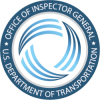Our Objective(s)To assess FAA's efforts to advance beyond visual line of sight (BVLOS) drone operations outside the parameters of existing drone regulations.
Why This AuditNationwide interest in using unmanned aircraft systems (UAS), commonly referred to as drones, in increasingly complex operations BVLOS is expanding. FAA has efforts underway to help advance BVLOS operations, policy, and rulemaking, including through the BEYOND program. However, there are potential challenges and safety risks associated with integrating drones into the National Airspace System (NAS). We initiated this audit to continue our oversight of FAA's drone integration efforts for complex BVLOS operations due to their potential for introducing risks to the NAS and the importance of maintaining the United States as a leader in aeronautics.
What We FoundFAA approved increasingly complex BVLOS drone operations.
FAA increased approvals for BVLOS operations from 1,229 in 2020 to 26,870 in 2023. FAA used small UAS rule waivers, air carrier operating certificates, and regulatory exemptions to increase approvals.
FAA's BVLOS operational goals and metrics were difficult for most lead participants to meet.
A majority of program lead participants did not meet most of BEYOND's six operational performance metrics, and operators flew only a small percentage of flights without a visual observer.
The BEYOND program's overall effectiveness is hindered by its lack of participant and mission variety.
FAA collects and shares partnership program data but is not using comprehensive data to inform rulemaking, and its validation process can lead to errors.
FAA applied lessons learned to enhance its data collection process but does not consolidate data across offices.
While BEYOND program data is shared with participants, it has limited use informing rulemakings.
FAA's data input and validation process is vulnerable to errors.
FAA ceased collecting data on BEYOND program societal and economic benefits and community engagement.
FAA's rulemaking team decided they no longer needed societal and economic benefits data, despite program goals to collect it.
RecommendationsWe made 7 recommendations to improve FAA's efforts to advance BVLOS drone operations outside the parameters of existing drone regulations.


